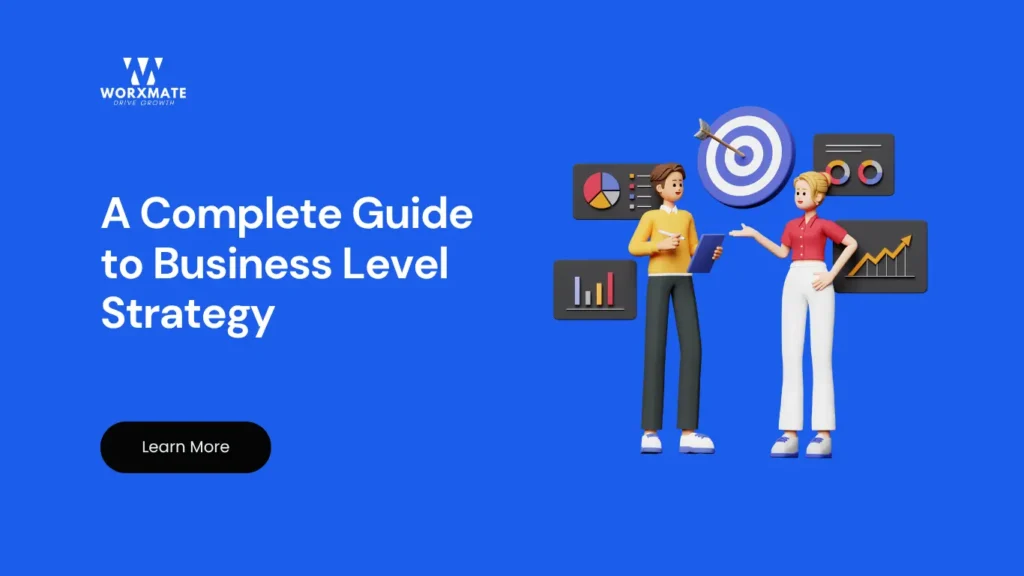Summary:
Business level strategy refers to the deliberate actions and decisions companies make to achieve competitive advantage within specific market segments. It involves strategic choices about resource allocation, differentiation, and value creation to outperform competitors. Understanding and implementing effective business level strategies is crucial for sustainable growth, market positioning, and long-term business success.
Why Business Level Strategy Defines Your Success
In today’s hyper-competitive marketplace, having a robust business level strategy isn’t just an advantage—it’s your survival toolkit. While countless businesses launch with great products and ambitious dreams, only those with well-defined strategic frameworks consistently outperform their competitors and achieve sustainable growth.
Business level strategy serves as your company’s roadmap for creating unique value, capturing market share, and building lasting competitive advantages. It’s the critical bridge between your corporate vision and day-to-day operations, determining how you’ll win in your chosen market segments.
Whether you’re a startup founder, business executive, or strategic planner, mastering business level strategy will transform how you approach competition, allocate resources, and deliver value to customers. This comprehensive guide will equip you with the knowledge and tools to develop winning strategies that drive measurable results.
What is Business Level Strategy?
Business level strategy represents the deliberate and purposeful actions companies take to achieve competitive advantage within specific market segments. Unlike corporate-level strategy that focuses on portfolio management and overall direction, business level strategy zeroes in on how individual business units compete effectively in their markets.
At its core, this strategic approach involves making critical choices about resource allocation, product differentiation, and customer value creation. It answers fundamental questions: How will we compete? What makes us unique? How do we create value that competitors can’t easily replicate?
The strategy operates within three distinct organizational levels: corporate-level (overall direction and scope), business-level (competitive positioning), and functional-level (operational execution). This hierarchical structure ensures alignment between big-picture vision and tactical implementation.
Key Components of Business-Level Strategy
-
Commercial Strategy Foundation
Your commercial strategy forms the beating heart of business level operations. This component focuses on economic sustainability through revenue models, pricing strategies, cost management, and financial planning. It ensures your business remains viable while providing resources for future growth investments.
Effective commercial strategies balance short-term profitability with long-term market positioning. They consider market dynamics, customer willingness to pay, and competitive pricing pressures to optimize financial performance.
-
Brand and Positioning Strategy
Brand strategy works alongside commercial elements to define your unique market position. It establishes your value proposition, core principles, and differentiation factors that distinguish your offerings from competitors.
A well-articulated brand strategy simplifies decision-making across your organization. Every action aligns with your brand’s core identity and values, creating consistent customer experiences that build loyalty and trust.
-
Product and Innovation Strategy
Product development strategy focuses on creating ongoing value through innovation and market responsiveness. This component emphasizes fostering creativity, developing new offerings that meet evolving customer needs, and maintaining competitive relevance.
Successful product strategies balance customer demands with technical feasibility and business viability. They create offerings that provide high customer value while remaining difficult for competitors to replicate.
Types of Business Level Strategies
-
Cost Leadership Strategy
Cost leadership involves becoming the lowest-cost producer in your industry while maintaining acceptable quality levels. Companies achieve this through high-volume purchasing, operational efficiency, overhead reduction, and streamlined processes.
This strategy works particularly well in price-sensitive markets where customers prioritize value over premium features. However, it requires significant scale and operational excellence to maintain sustainable cost advantages.
-
Differentiation Strategy
Differentiation focuses on creating unique product or service attributes that customers value and willingly pay premium prices for. This might involve superior quality, innovative features, exceptional service, or brand prestige.
Successful differentiation requires deep customer understanding and continuous innovation. Companies must consistently deliver distinctive value that justifies higher prices and builds customer loyalty.
-
Focus Strategy
Focus strategies target specific market niches with either cost leadership or differentiation approaches. Companies concentrate resources on particular customer segments, geographic regions, or product categories where they can achieve competitive advantages.
This approach allows smaller companies to compete effectively against larger competitors by becoming specialists in their chosen niches.
How to Implement Business Level Strategy
-
Strategic Implementation Framework
Implementing business level strategy requires systematic approach with clear steps and accountability measures.
-
-
Step 1: Target Market Identification:
Define your ideal customers with precision. Understanding demographics, psychographics, buying behaviors, and pain points creates the foundation for strategic decisions.
-
Step 2: Customer Needs Analysis
Research extensively to understand what your target customers truly want. This might include better quality, unique features, lower costs, or superior service experiences.
-
Step 3: Capability Assessment
Evaluate your internal resources, competencies, and constraints. Identify how you can uniquely meet customer needs better than competitors.
-
Step 4: Competitive Analysis
Examine how competitors address customer needs and what strategies they employ. Look for gaps or weaknesses you can exploit.
-
Step 5: Goal Setting and Measurement
Establish specific, measurable objectives with clear timelines. Create metrics that track progress toward competitive advantage goals.
-
Case Study: Strategic Technology Implementation
According to Gartner’s 2025 strategic technology trends, organizations successfully implementing business level strategies are embracing transformative technologies to gain competitive advantages.
Companies leveraging Agentic AI systems demonstrate how strategic technology adoption creates sustainable differentiation. Gartner predicts that by 2028, at least 15% of day-to-day work decisions will be made autonomously through agentic AI, up from 0% in 2024.
Organizations implementing spatial computing technologies are seeing remarkable growth trajectories. Gartner forecasts spatial computing will grow to $1.7 trillion by 2033, up from $110 billion in 2023.
Early adopters are using these technologies to streamline workflows, enhance collaboration, and create new customer experiences.
The success of these implementations demonstrates how forward-thinking business level strategies incorporate emerging technologies to create competitive moats that are difficult for competitors to replicate quickly.
Best Practices for Business Level Strategy Success
Adaptability and Continuous Evolution
Business level strategies must evolve with changing market conditions, customer preferences, and competitive landscapes. Static strategies quickly become obsolete in dynamic business environments.
Regular strategy reviews, market monitoring, and performance analysis ensure your approach remains relevant and effective. Be prepared to pivot when circumstances change or new opportunities emerge.
Alignment Across Organization
Successful strategy implementation requires alignment across all business functions. Marketing, operations, finance, and human resources must work cohesively toward strategic objectives.
Clear communication, shared metrics, and coordinated decision-making processes ensure everyone understands their role in strategy execution.
Conclusion: Transform Your Strategic Approach with Worxmate
Developing and executing effective business level strategies requires more than just planning—it demands systematic implementation, continuous monitoring, and agile adaptation to changing conditions.
Worxmate’s OKR Tracking Software provides the strategic alignment and performance tracking capabilities essential for business level strategy success. Our platform helps you translate strategic objectives into measurable outcomes, align teams around common goals, and monitor progress in real-time.
With Worxmate, you can ensure your business level strategy moves beyond planning documents to become a living, breathing framework that drives consistent competitive advantage and sustainable growth.
Ready to supercharge your strategic execution? Book a demo with Worxmate today and discover how OKR-driven strategy implementation can transform your business performance.



